I’m betting everyone understands how fulfilling it is to haul a heavy object on their own.
While carrying your burdens by yourself gives a sense of accomplishment, it might not be so impressive if it ends up hurting you.
The strain in moving heavy material can cause impairing injury and pain. It can harm your back, hands, nerves, and even shoulders. That is painfully serious, right?
It is impossible to avoid lifting heavy objects because help does not always come when you need it. So, what should you do when you have to lift things by yourself? These proper lifting techniques might save your back when the time comes.
Planning For The Lift
Just like you have to plan for any other event, take a moment and think about the awaiting task. By doing so, you’ll be able to size up the item and devise the best way to handle it.
Preparing your mind for the weightlifting session will enable you to put a few necessities in place. In your plan, ensure that you:
1. Wear Appropriate Clothing

Hey, mate! Loosen up because, at this moment, clothes no longer make you. In this situation, clothes help you, instead. So, you might want to consider what you wear for the task.
If you want to be comfortable when hauling heavy objects, wear protective gloves and comfortable attire. Wear loose-fitting clothes and sturdy footwear to avoid messing with your posture, straining your feet, or tearing your clothes.
Loose-fitting clothing and appropriate shoes will give you room to stretch and find stamina when hauling.
2. Determine Your Load’s State

There are various kinds of loads, each demanding a unique way of handling it. Knowing the state of your load should allow you to have a good hold on the package you’re lifting.
Determine whether they are in liquid or solid form and understand how you’ll move them. For instance, liquid loads shift when you move them. So, if you expect such goods, it’ll help you understand how to lift them to prevent slips and falls.
And if your solid cargo holds small objects that can knock against each other, you’ll remember to balance the weight and avoid injuries.
3. Keep Needed Assistance Near
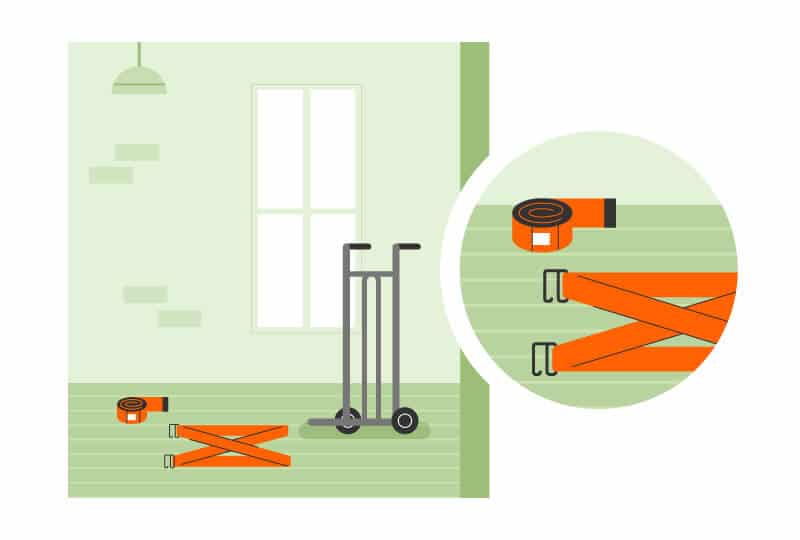
Being able to lift a heavy object does not necessarily mean you’ll be able to do it safely. Therefore, it is vital to understand your ‘big-person’ limits.
So, be free to ask for help if you realise that the weight might overwhelm you. You can keep a friend around to help when the moment comes. However, ensure discussing with them beforehand so you can work as a team.
Do not worry if there’s no one to help. You can place a firm table next to the load and allow your load to rest on it while you reposition yourself for the mighty move.
4. Clear Obstacles
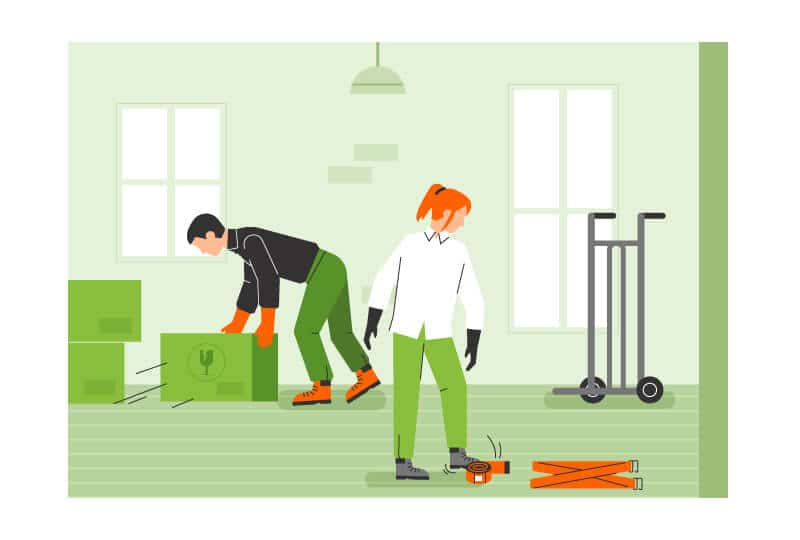 Clear the course you’ll be trailing and remove anything that might lie on the path. The reason is, obstacles can alter the way you move, knock you over, or block your way.
Clear the course you’ll be trailing and remove anything that might lie on the path. The reason is, obstacles can alter the way you move, knock you over, or block your way.
Especially remove dangerous objects like fruit peels or slippery wrapping materials and wipe down wet surfaces on the floor.
Apart from that, check for stairs and uneven floors to prevent tripping. You can choose an alternative route if there’s nothing you can do about the obstacles.
Positioning Yourself
The secret to a safe and successful haul lies in your stance. If you consistently adopt wrong positions when lifting heavy objects, you may set yourself up for severe back, shoulder, and wrist pain.
This pain could cost you much more than you can imagine. Therefore, while lifting:
5. Assume A Firm Position
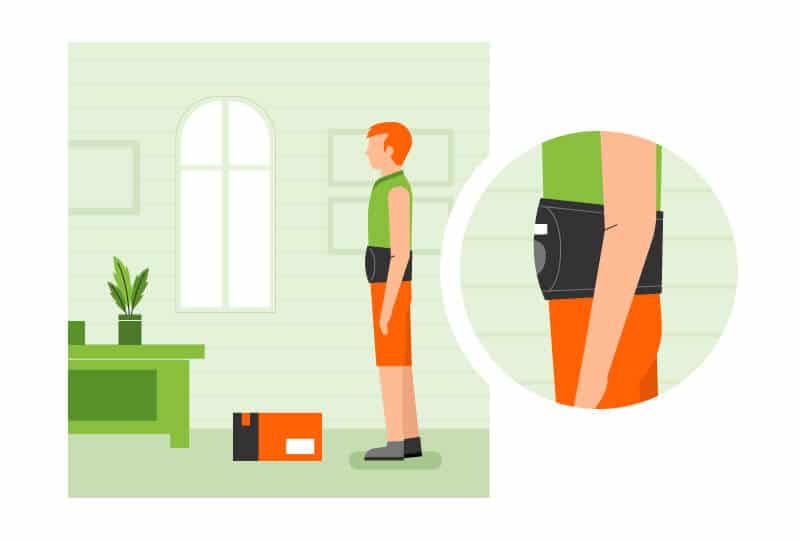
Stamina, mate, stamina! The best course to take when you encounter a heavy load is to assume a firm position.
Since it is the item’s weight against your body, take measures that will not allow the weight to press on you. Start by maintaining balance- get close to the load and center yourself over it by spreading your feet wide apart.
Proceed and tighten your core muscles. Ensure that one of your knees is on the floor, and the other is at a right angle. While in that position, find a hold on the load with your hands.
6. Protect Your Back
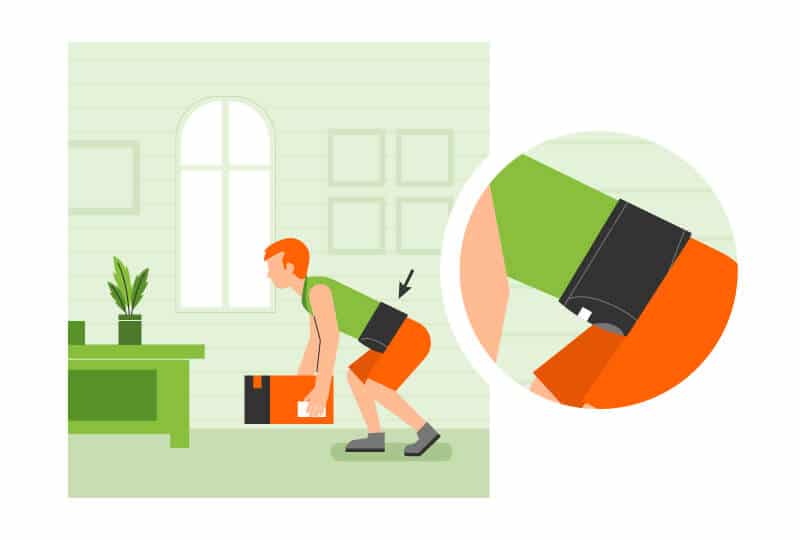
Ensure that anything you do does not strain the back. To keep it safe, avoid lifting while standing. If you do, you’ll put excess force on your shoulder and arms, and the pressure notwithstanding, will hurt your back.
Apart from that, avoid twisting at the waist when changing direction. If you feel like doing so in lifting, turn your feet, and take small steps until you find the correct and the most comfortable position to change direction.
You want to protect your back, right? If yes, then better to only strain your stomach muscles instead.
7. Lift With Your Legs
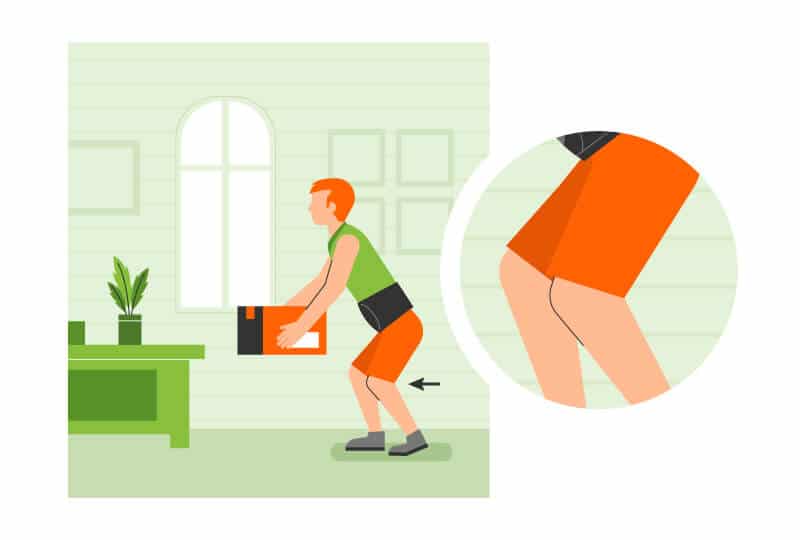
The secret to safe lifting is doing so with your legs and not your back. Well, essentially, it means that when lifting, bend the knee, or squat and rise with the load close to your hips.
Lifting with your legs means that your back stays as straight as possible. And, you’ll be safe if you resist the urge to bend your waist.
Positioning The Object
Another crucial aspect to observe when moving a load is how to position it. The way you position yourself dictates which muscles you’ll engage. Meaning, laying it in a suitable position will allow you to engage the correct body parts.
Check out what you should do to improve overall performance.
8. Hold The Object Close
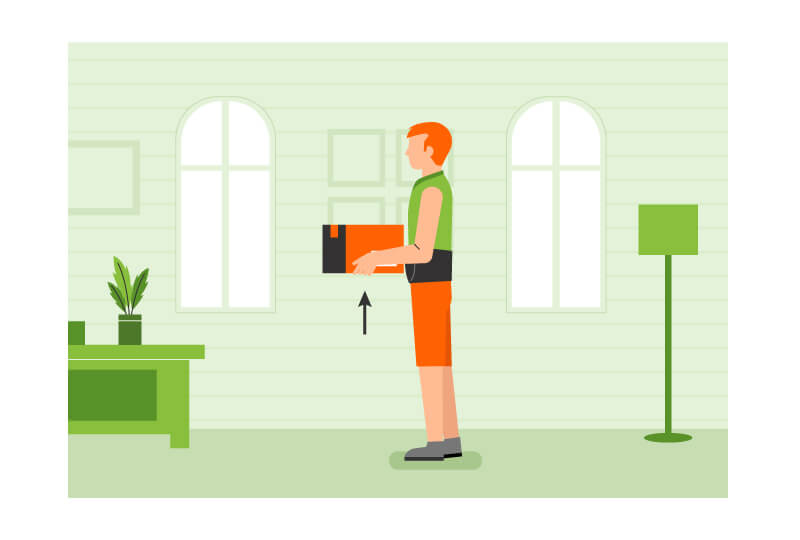
Do you want strength and stability when moving a heavy load? Then make sure you don’t lift it too far from the body. If you do, you’ll exert pressure on your spine.
Get close to the item and ensure that it is near your waist. It should lie between your waist and the shoulders – at the belly button level. If it is close enough, find the hold to ensure that the weight distributes evenly between your hands.
Walking The Distance
So, how do you navigate around with a mighty load? You should understand that lifting and walking are power jobs that require your full attention. Luckily, you can avoid slipping, tripping, or falling if you:
9. Keep Eyes Ahead
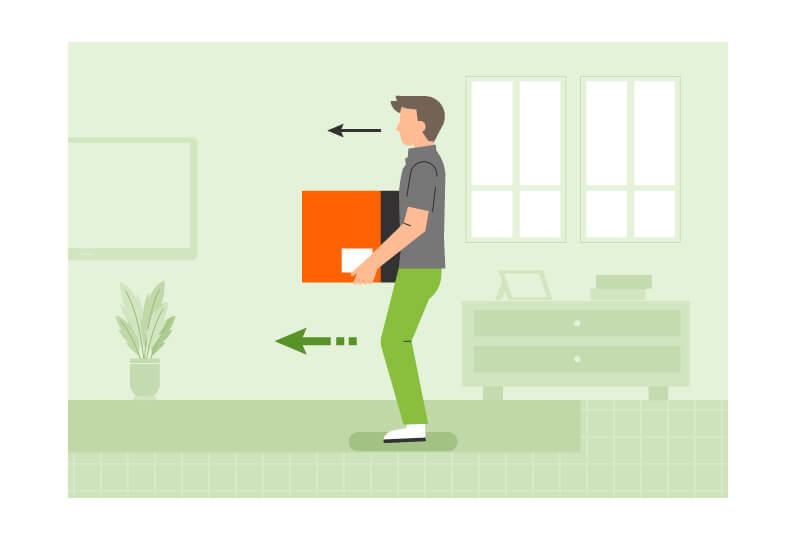
Watch out for both you and your luggage when moving. Keep your eyes on the path and not the load. By so doing, you’ll be able to note obstacles that might cause accidents. Plus, you want to navigate corners safely, don’t you?
10. Secure The Walk

If the item is secure in your hands, begin moving through one stride as you fall into several others. However, avoid rushing and move as slow as you can. By so doing, you will get to a greater level of exertion to tolerate the volume.
Setting It Down
This part shouldn’t be a hassle now that you beat the most challenging chore. It should be a rejoicing moment because the dreadful lifting session has ended.
11. Resume The Lifting Position
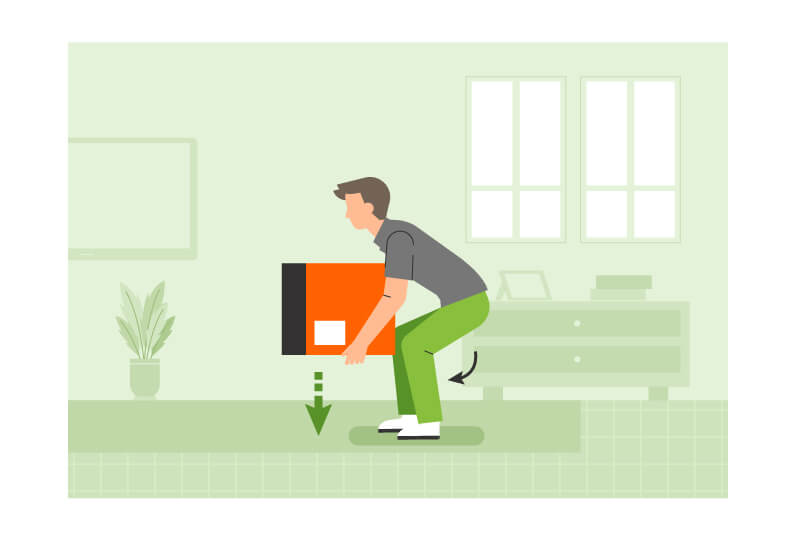
The most grievous mistake most lifters make while putting the load down is doing so by bending at the hip. It may be what the body calls for at the moment, but it’s better to avoid it to be safe.
Bend at the knee such that you stoop or squat towards the floor. All this while keeping your head up and tightening your stomach muscles. It is equally essential that the load stays as close to your body as possible.
By doing so, you will prevent the load from overpowering you, and forcing you to drop it to the floor. Wait until the item is secure before you release your handhold. You can now gently set it down on the ground or the table.
Injuries Sustained From Improper Lifting
Sadly, overexertion and improper lifting cause dreadful health and safety concerns. If you think muscle pain is the only issue you should worry about, wait until you learn what is at stake.
Back Injuries
Poor postures during lifting can cause overexertion that affects the back. Unfortunately, when you overexert pressure on your back, you tend to overstretch the muscles on your lower back. And when the muscles overstretch, tissues tear.
When there are tears, the muscles weaken, such that they fail to hold the bones in the vertebral column as they should. Unfortunately, this occurrence destabilises the spine to cause pain in the lower back.
Neck Injuries
Too much strain and holding the neck in an awkward position might also cause stiffness and neck pain. Your neck can also break in the event. The pain might show up immediately or build up with time.
Sometimes, the pain experienced in the neck resolves with time. But, if you are unlucky and irritate the nerves too much, neck injuries can cause life-changing consequences, including breathing difficulties and paralysis.
Shoulder Injuries
Shoulders offer the motion that the body needs when carrying mighty loads. So, when you overstretch the arm or press on the shoulder blade, you stand to injure and tear the rotator calf muscles.
And when you harm the rotator calf, the shoulder joints destabilise.
Arm, Hand, And Wrist Injuries
Friction during motion can cause painful bruises. Apart from that, straining too much can cause inflammation, soreness, and discomfort in the hands. Sadly, the bones can fracture, making the hand dysfunctional.
Using Equipment
If you operate an establishment or work in a factory or warehouse where you handle far too many heavy objects, using equipment to carry loads may be the best option. The reason is, lifting by yourself can affect your health and the overall job performance.
So, to be safe and make everything easy, you can:
Use Lifting Straps
You might be a hulk, but that doesn’t mean you should move furniture by yourself. If you ask a partner to help out, you can use lifting straps to move the bulky objects together.
A lifting strap is a rope that you place under an object so two people can lift the load from both sides.
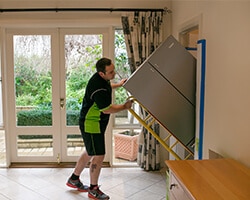
Use A Moving Dolly
Do you have a fridge or stove that you want to move somewhere? Well, tip the dolly forward so that its bottom flips underneath the load’s base.
When the plate is in place, tip it back on its wheels and roll off. Be careful, however, not to topple over. If it is too hard, ask someone to hold the load for you.
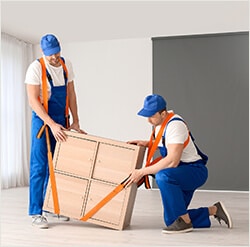
Use A Shoulder Dolly
Unlike the moving dolly, shoulder dollies require two lifters to wear a harness with a buckle. To use it, each of the lifters should flip the harness over their heads. They should then place the longer strap under the middle part of the load, such that it distributes the weight evenly.
Both the users have to squat a bit to ensure the harness accommodates their different heights and weights. After that, they stand up and move.
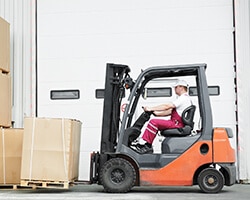
Use A Forklift Or Hand Jack
When using a forklift, ensure that the forks are directly in front of the loads lying on the pallets. Raise the forks to pick the items, and then tilt the mast to stabilize the items, with the more massive part close to the wheels.
Helpful Advice
Here are some advice you should keep in mind if you want to move heavy objects the right way.
- Don’t be overconfident. Instead, only lift the weight you can comfortably handle.
- Ask for assistance if the load you need to move is heavier than you thought.
- Avoid using back belts because they don’t assure prevention of back injury.
No more backaches and neck pains, now that you have the take-home lifting techniques for reference. All in all, it doesn’t hurt to listen to your body when you move heavy objects. Be safe.






0 comment